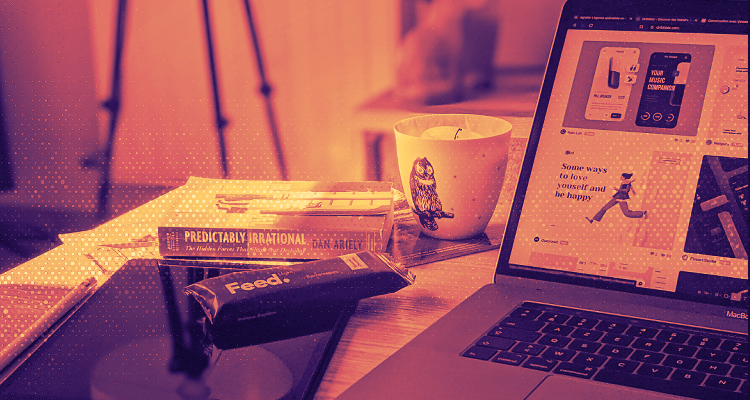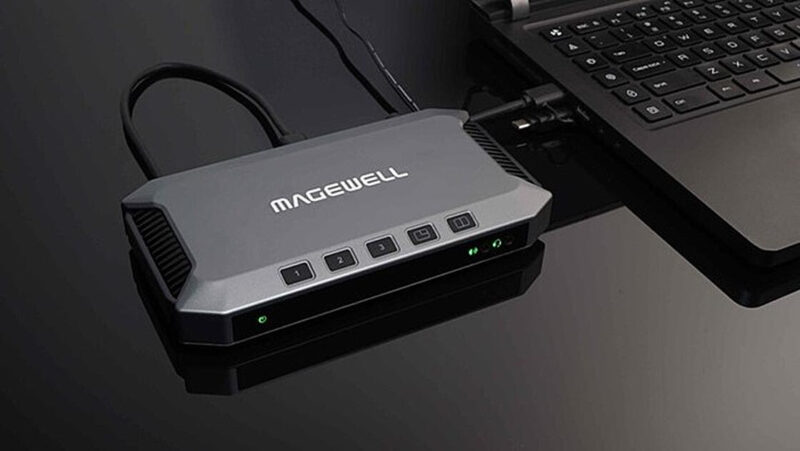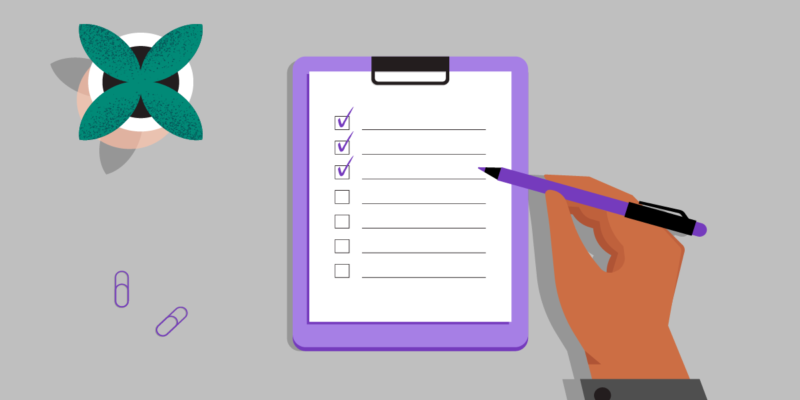Resources for Becoming Your Best AV Self
 By Tom Kehr
By Tom Kehr
Almo Pro A/V
During the spring E4v, I was asked about my resources. For me, that’s an almost overwhelming question. Yes, I’m a bit of a bookhound, but there are also people, organizations, websites and papers that I’ve found invaluable over the years.
Like many of you, I tripped into this whole AV thing. My first lessons started in college, learning how to over-and-under wrap 50-foot mic cables and putting microphones away at the end of the day. When the school installed a new console in their auditorium in the spring of 1986, I met the integrator, David Bretzke, which sold them the new 48-channel console. That also turned into my first all-nighter. Thus began a two-year, part-time internship with David — and I soaked up everything I could.
Resource #1: Mentors. You can also think of this as an apprenticeship even though that practice sounds arcane. Regardless, find an AV “craftsperson” and attach yourself as much as practical. Watch. Ask. Learn. I was just very fortunate to start out with a really good one in David and we remain close friends today.
I attended my first SynAudCon (Synergetic Audio Concepts) training in March of 1997. It was my first formal education in how to become a true “audio practitioner.” Originally, I was going to pay my own way, and figured I could only afford the first two days. My employer saw what I wanted to do and he paid for the entire five days of SynAudCon training. That was a kindness I will always remember. It was my first opportunity to sit under the phenomenal tutelage of Pat Brown, and it’s also when I first met the late Ray Rayburn.
In 2001, I was fortunate to take two weeks of AV design training at ICIA back when it was a continuing rotation of volunteer instructors (Mario Maltese, the late Kim Milliken, Roy Hermanson, Scott Sharer and more). It was an all-star cast, each in their own area of expertise and it was amazing. I still have the two original 3.5-inch three-ring binders. I was able to take these classes alongside two co-workers, Dave Corcoran and Steve Wiltsie, and we all successfully passed our CTS-D certification together. That was no easy feat in those days, so it tells you not only about the quality of the training but also about the caliber of people I was fortunate enough to be learning from and working with on a daily basis.
Accounting I and II were required classes when I did some night school. I didn’t know it at the time, but the accounting lessons came in handy for the years when I had my side business. I believe that no learning is ever wasted. There’s nothing more time consuming than a lack of knowledge.
Resource #2: Training. While there is online and virtual training, I always favor the in-person class experience. Yes, it can be a significant investment in time and money. Note that I said investment rather than expense. Many AV manufacturers also offer good solid training beyond their product training. My favorite audio training is still the SynAudCon in-person offerings.
When you attend a training, you begin to find out something of what the presenters know — and I’m talking about what they know beyond the topic they’re presenting on. I’ve mentioned Pat, Mario and others but I began to glean from other presenters including Bill Whitlock, Brad Malone, Gordon Moore, John Murray, Jim Brown, Joe Cornwall, Peter Mapp and many, many others. Even a side conversation can yield useful tips and tricks that aren’t even related to the subject at hand.
Resource #3: People. Smart people. You don’t need to be the smartest person around, but learn who the smart people are and listen to them. I’ve said this to my kids: “Hang around the smart people.” If you can’t listen to them in person, read the books, articles, chapters and white papers they’ve written. Look at their websites and watch their YouTube videos.
I think the first three AV books that I bought that had a significant impact on me were “Sound Reinforcement Handbook, second edition,” by Gary Davis and Ralph Jones; “Sound System Engineering, 2nd edition,” by Don and Carolyn Davis; and “Live Sound Reinforcement” by Scott Hunter Stark. My personal library has now grown to almost 400 titles. They aren’t all AV books, but include physics, electrical and business-related titles too. I was asked recently if I were to choose one AV book, what would it be? Without hesitation that would be the “Handbook for Sound Engineers,” edited by Glen Ballou. It’s now in its fifth edition, and yes, I have all the editions plus its previous iteration, “The Audio Cyclopedia,” first and second printings. John Murray has a signed first edition of “The Audio Cyclopedia” and I’m extremely jealous.
Read also about different approaches to business. I have really enjoyed “Bill and Dave,” “The Toyota Way,” “Brick by Brick: How LEGO Rewrote the Rules of Innovation and Conquered the Global Toy Industry,” “Crossing the Chasm,” “The Design of Everyday Things,” “Out of the Crisis” and more. Pre-pandemic, I would normally use flight time for these “extra-curricular” readings.
Resource #4: Books, articles, videos and reference works. Get to know the people and their writings. Look at their bibliographies — what have they read and who have they learned from? Read up on the why and the how. Among my library are things like the IEEE Standard Dictionary of Electrical and Electronic Terms. You know, that kind of stuff in the special section of the library that you can’t check out. (I could even argue against some of their definitions but it’s nice to have these references.) Forget the man cave. Bring back the study. Make America smart again.
During those first two years gleaning everything I could from David Bretzke and others, I couldn’t get enough. Besides doing sound at the various churches I attended, I started a side business doing live sound in 1991. I had one client who did a gig once a month for the first year and I put it all back into the business. I built up gear over time, emphasizing quality over quantity and that’s an approach I never regretted. I’m still using some of that gear today. The client list and gear continued to grow. I learned not to short sell my equipment and abilities. I did all sorts of music genres in all sorts of venues and I stayed away from bar gigs except for a time or two, and quickly learned to turn down anything promoted as a “Battle of the Bands.” I did theater work. I hired contract help. I did my accounting and taxes. I issued 1099s. I carried equipment and general liability insurance. I had a 10-foot. trailer and a garage full of gear and a wonderful group of repeat clients. Not bad for a side gig.
After a long stint at purchasing for a ProAV dealer, I became a systems designer and became versed in the video side. Eventually, I was hired as a full-time instructor for InfoComm (now AVIXA). So now I had to teach others the things I had learned and research topics that I wasn’t as familiar with. I referenced and researched and discovered who knew their stuff and who didn’t. I endeavored to find the origins or original references to topics such as the balanced interface. (Where does this come from and who says?)
Resource #5: You. You can’t beat yourself as a resource. Follow your passion; work hard to be better, to learn more. Stay hungry. Read. Watch. Get your hands dirty. Learn how to solder, terminate RJ45s, certify a permanent link as a start. Accumulate tools and learn how to use them. Stay curious. Try new things. Take advantage of every opportunity that comes your way to learn something new — even if it’s not an AV-related topic. “How does that work?” I was glad to have the advantage to work all of those different gigs outside the four walls of the typical church building. I learned to work long hours, through some hard circumstances, rotten weather and under pressure. It certainly builds your troubleshooting and creativity skills. You’ll also make mistakes. Mistakes are typically only made once.
Lastly, endeavor to strike a balance between your professional hunger and your family. If you have kids, they are with you for only a short period of time. Don’t sacrifice family at the altar of your pursuits. While I was able to coach my daughters’ softball teams and even sponsor them through the side business, the side business did also take away from family and vacation time. It’s the reason I started charging more for my time. If you were going to take me away from the family, there’s a cost involved.
Here is a spreadsheet of my book recommendations, some context about them as well as other resources and, if you’re interested, here’s a list of my entire library. Feel free to ask me about any of them.





